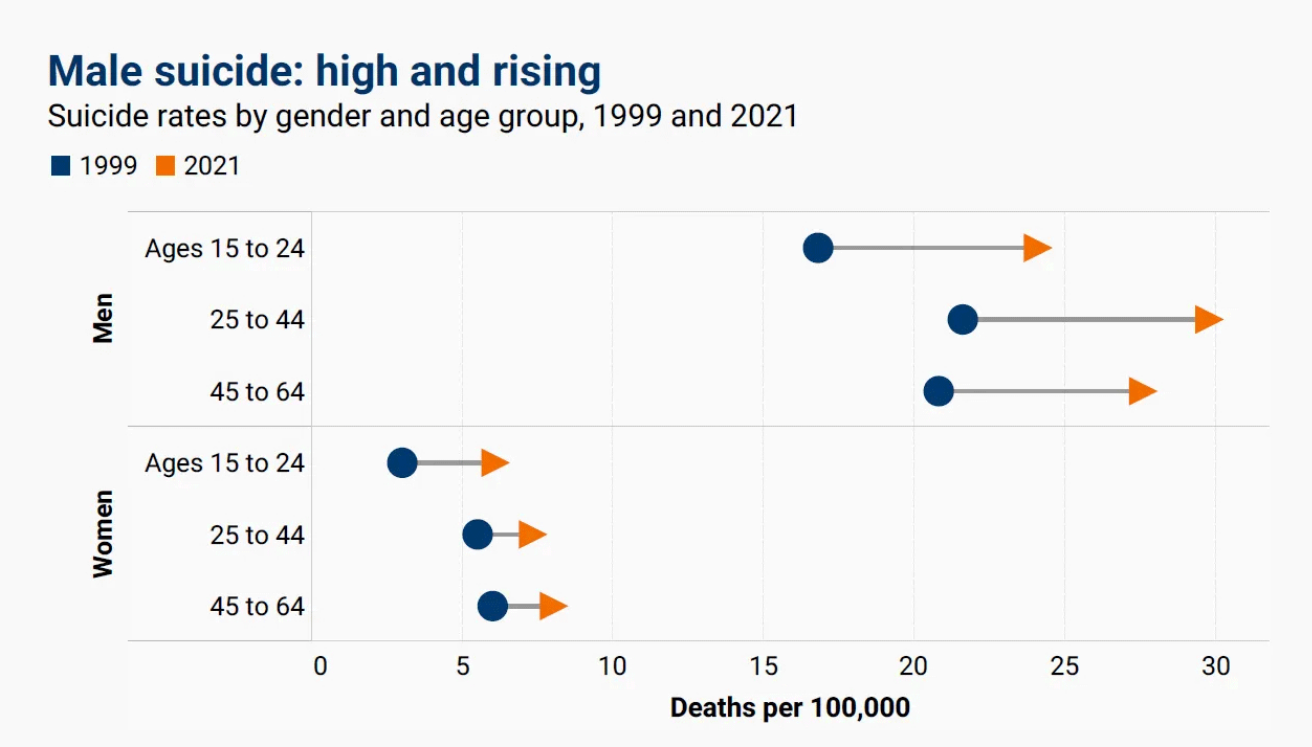One of my first forays into charitable giving was to support poor children to supply them with clean water, schooling, and other basic needs. You would see pictures of the kids and get periodic updates. One of the things that struck me was that they admitted “Sponsoring boys is particularly important, so we would urge you to consider a boy. Girls tend to be sponsored more often, probably because they may evoke more compassion than boys. But boys have the same fundamental needs as boys.” This was striking and sad to me, but honest (I sponsored several boys over many many years).
This simple observation from the charity may be a trend writ large. Girls are perceived as more vulnerable; boys are expected to overcome problems and adversity. There are likely many other biases and trends at play here. In terms of sheer numbers and opportunities and programs exclusively for boys vs girls, the girls’ programs are vastly more popular. This also is true for scholarship opportunities, such as the push for women in STEM. (Reardon et al., 2019)
Of personal interest to me is math proficiency. There is a large gap with respect to gender for math achievement, which was surprising when I saw it. More and more pink as time goes by.

The push for young women in math has paid dividends, but in some ways, the pendulum has swung pretty far. Reardon et al. also found gender gaps in English Language Arts, favoring girls; girls have an edge of at least a grade level by eighth grade.
This effect is enhanced when Reardon et al. looked at race and SES. There is no variation between richer and poorer districts with respect to English Language Arts. There is a bias in math. Decreasing lines indicate a bias towards girls.

Here is a breakdown of gender gap in 9th grade math GPA in Chicago’s public schools with respect to grade point average (Easton & Diaz, 2023):

But let’s look at some other metrics. Between males and females, suicide rates have increased more dramatically among young men aged 15-24 (Reeves, 2023). Just a note: AIBM (https://aibm.org) is a terrific site for boys and men advocacy, highlighting some of the not-talked-about disparities and also for emerging, important trends.

There is an epidemic of single mothers, and this is a worrying trend, particularly in girls. For example, AIBM (Smith, Schoppe-Sullivan, & Fagan, 2024) writes that “A father’s closeness to his child in middle childhood and adolescence protects against loneliness and depressive symptoms, particularly in girls (Machin, 2018). Sixteen-year-old girls who are close to their fathers have better mental health at 33 (Yan, Schoppe‐Sullivan, & Feng). Controlling for many other factors, the adolescent delinquency rate for boys is lower when they have involved fathers (Flouri & Buchanan, 2003)”.
We at Mercy Lab would like to see more interventions for struggling boys and have partnered with Youth Guidance (https://www.youth-guidance.org/), specifically their BAM (Becoming a Man) program in Los Angeles. We would like to see more men of character, men who are providers, and more great fathers.
REFERENCES
Easton, J. Q., & Diaz, B. (2023). Lasting Differences: Math Grades and Gender. UChicago Consortium on School Research.
Flouri, E., & Buchanan, A. (2003). The role of father involvement in children’s later mental health. J Adolesc, 26(1), 63-78. https://doi.org/10.1016/s0140-1971(02)00116-1
Machin, A. (2018). The life of dad: The making of a modern father. Simon and Schuster.
Reardon, S. F., Fahle, E. M., Kalogrides, D., & Podolsky, A. (2019). Gender Achievement Gaps in U.S. School Districts. American Educational Research Journal, 56(6). https://doi.org/10.3102/0002831219843824
Reeves, R. (2023). Some news I can’t wait to share: AIBM.
Smith, B., Schoppe-Sullivan, S., & Fagan, J. (2024). Dads Rock: The Evidence. https://aibm.org/research/dads-rock-the-evidence/.
Yan, J., Schoppe‐Sullivan, S., & Feng, X. Trajectories of mother-child and father-child relationships across middle childhood and associations with depressive symptoms. Development and Psychopathology, 31, 1381-1393. https://doi.org/https://doi.org/10.1017/S0954579418000809.
